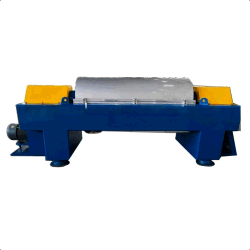Key Types of Oil-Water Separators
2024-05-17
An oil-water separator is a device used to separate oil and water mixtures into their individual components. It is commonly employed in various industries to treat wastewater and ensure environmental compliance by removing oil contaminants before the water is discharged or reused. These separators are essential in settings where oil contamination is prevalent, such as in industrial plants, marine operations, automotive workshops, and oil refineries.
Key Types of Oil-Water Separators
1. Gravity Separators:
- Description: Utilize the difference in specific gravity between oil and water to separate the two. Oil, being lighter, rises to the top while water settles at the bottom.
- Applications: Common in industries where large volumes of oil-contaminated water need treatment.
- Examples: API (American Petroleum Institute) separators and parallel plate interceptors.
2. Centrifugal Separators:
- Description: Use centrifugal force to separate oil from water. The mixture is spun at high speeds, causing the heavier water to move outward and the lighter oil to concentrate in the center.
- Applications: Suitable for applications requiring high-efficiency separation and where space is limited.
3. Coalescing Separators:
- Description: Employ coalescing media to aggregate small oil droplets into larger ones, making it easier for them to rise to the surface.
- Applications: Effective in treating emulsified oil-water mixtures and are commonly used in automotive workshops and industrial wastewater treatment.
4. Hydrocyclone Separators:
- Description: Use a cyclonic effect to separate oil from water. The mixture enters a cylindrical chamber where centrifugal forces cause the oil to move to the center and water to the outer edges.
- Applications: Widely used in the oil and gas industry due to their efficiency and compact design.
Components and Operation
- Inlet: The entry point for the oil-water mixture.
- Separation Chamber: The main body where the separation process occurs, utilizing gravity, centrifugal force, or coalescing media.
- Oil Collection Area: The section where the separated oil is collected and removed.
- Water Outlet: The exit point for the treated water, which can then be discharged or further treated if necessary.
Key Features
1. Efficiency: The effectiveness of an oil-water separator is measured by its ability to reduce oil concentration in the treated water.
2. Capacity: The volume of water the separator can handle, typically measured in gallons per minute (GPM) or liters per second.
3. Maintenance: Ease of cleaning and maintenance, including the removal of accumulated oil and sediment.
4. Construction Materials: Often made from corrosion-resistant materials like stainless steel, fiberglass, or plastic to ensure durability and longevity.
Applications
1. Industrial Wastewater Treatment:
- Essential in manufacturing plants, refineries, and chemical plants to treat oily wastewater before discharge.
2. Marine and Offshore:
- Used on ships and offshore platforms to treat bilge water and ensure compliance with marine pollution regulations.
3. Automotive and Transport:
- Employed in car washes, service stations, and transport depots to treat runoff water contaminated with oil and grease.
4. Food Processing:
- Utilized in facilities where oil is used in cooking or production processes to treat wastewater.
Environmental and Regulatory Compliance
Oil-water separators help industries comply with environmental regulations by reducing the oil content in wastewater. Regulatory bodies like the Environmental Protection Agency (EPA) in the United States set stringent limits on oil and grease discharge, making the use of these separators critical for compliance and avoiding penalties.
Maintenance and Best Practices
1. Regular Inspection: Periodically check for blockages, wear, and tear.
2. Cleaning: Regularly clean the separator to remove accumulated oil, sludge, and other contaminants.
3. Performance Monitoring: Continuously monitor the performance to ensure it meets the required treatment standards.
4. Proper Disposal: Ensure that separated oil and sludge are disposed of in accordance with environmental regulations.
Leading Brands
- Alfa Laval: Known for high-efficiency centrifugal separators.
- HydroFloTech: Offers a wide range of gravity and coalescing separators.
- Parker Hannifin: Provides compact and efficient oil-water separators suitable for various industrial applications.
- SpillPro: Specializes in oil spill and water treatment solutions, including separators.
In summary, oil-water separators are vital for managing and treating oily wastewater across various industries. Their effectiveness in removing oil contaminants ensures environmental protection and regulatory compliance, making them an essential component in wastewater management systems.



